#Franklin Peterson
Text
So many emotions for today 🥹
So many theories and questions
I smell a bit of old lore
Love how they drew Theodore!
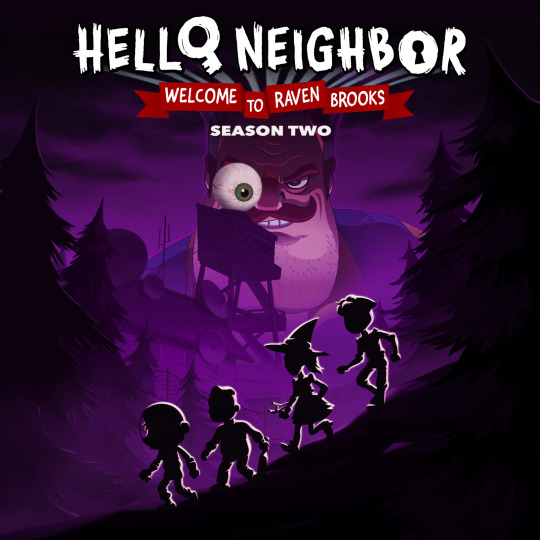
Is that Gerda, the mayor, principal Abenante and probably Leslie?

Ted's brother and also himself (Theodore)🥺🥹😭



39 notes
·
View notes
Text
~Peterson siblings~
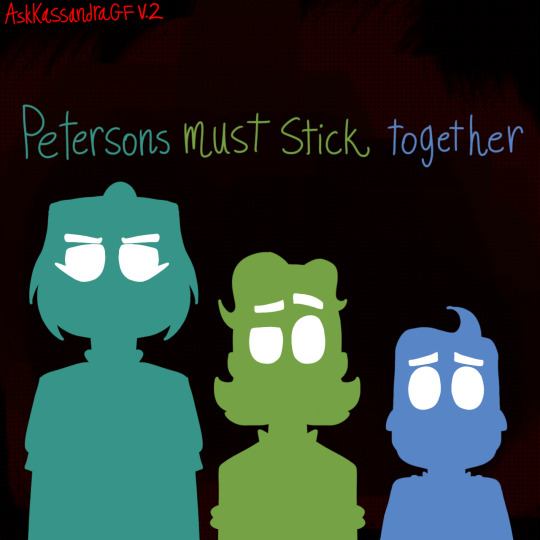

And yes, I added Lisa in this because I don't want her to be forgotten! Xd
#hello neighbor#hello neighbor welcome to raven brooks#hello neighbor animated series#lisa peterson#franklin peterson#mr. peterson#theodore master peterson#theodore peterson#AskKassandraGF V.2
41 notes
·
View notes
Text
So sad.. :<<<
he is "alive"?

Poor man
#helloneighbor#hello neighbor welcome to raven brooks#my art 🎨#arte#art#artedigital#theodore peterson#mr peterson#kid#brothers#franklin peterson
30 notes
·
View notes
Text
Terrible things - AXIE
(Warning: This video contains Flashing lights, Mentions of Suicide)
Kinda crappy video, sorry about that
This is such a good song, and it fits Theodore's character a lot
#hello neighbor#theodore peterson#aaron peterson#mya peterson#hello neighbor 2#hello neighbor hide and seek#secret neighbor#hello neighbor search and rescue#hello neighbor VR#hello neighbor welcome to raven brooks#HN WTRB#hello neighbor edit#TERRIBLE THINGS - AXIE#edit#my edit#hello neighbor compilation#hello neighbor montage#hello guest#Guest#hello neighbor books#nicky roth#franklin peterson
10 notes
·
View notes
Video
youtube
I did it again. I made a Hello Neighbor YTP and the ending gets juicy
#youtube#welcome to raven brooks#tiff#tuff#fumu kirby#bun kirby#nicky roth#trinity bales#toon#ravenbrooksytp#hello neighbor#kirby right back at ya#hoshi no kirby#anime#mr peterson#gabriel agreste#miraculous ladybug#youtube poop#miraculoustalesofladybugandcatnoir#miraculous ladybugytp#theodore peterson#franklin peterson
4 notes
·
View notes
Text
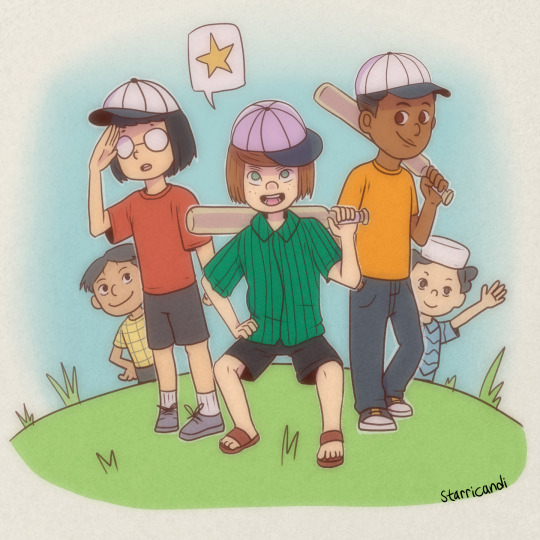
Team Peppermint Patty
34 notes
·
View notes
Text
Pink is for Boys
"Pink or Blue? Which is intended for boys and which for girls? This question comes from one of our readers this month, and the discussion may be of interest to others. There has been a great diversity of opinion on this subject, but the generally accepted rule is pink for the boy and blue for the girl. The reason is that pink, being a more decided and stronger color, is more suitable for the boy, while blue, which is more delicate and dainty, is prettier for the girl." ~ The Infants' Department, June 1918


[Left: The Blue Boy, oil on canvas, c. 1770, by Thomas Gainsborough.
Right: The Pink Boy, oil on canvas, c. 1782, by Thomas Gainsborough.]
Pink is for girls and blue is for boys. But it hasn't always been this way. Colour coding infants as a way of denoting gender was popular in 20th century America. The problem? Pink and blue? Which is for boys and which is for girls?
In 1927 TIME Magazine asked ten of the "leading stores that sell baby equipment" which colour was for which gender. Four stores responded pink for girls and blue for boys; Macy's (Manhattan), Franklin Simon (Manhattan), Wanamaker's (Philadelphia) and Bullock's (Los Angeles). Five stores responded pink for boys and blue for girls; Best's (Manhattan), Marshall Field's (Chicago), Filene's (Boston), Maison Blanche (New Orleans) and The White House (San Francisco). Curiously Halle's (Cleveland) responded that pink was for both boys and girls.
This debate would continue and it wasn't until mid-20th century that pink for girls and blue for boys became firmly cemented in western culture.
However the idea of colour coding infants dates back to the 19th century. According to La cour de Hollande sous le règne de Louis Bonaparte in 1808 in Holland pink was used to announce the birth of a girl and blue a boy. In March 1856 Peterson's Magazine (Philadelphia, USA) advises that the ribbon on a christening cap should be blue for a boy and pink for a girl. On the 23rd of July 1893 the New York Times writes that for baby clothes it's "pink for a boy and blue for a girl!"

[The Oddie Children, oil on canvas, c. 1789, by William Beechey, via North Carolina Museum of Art.]
During the latter half of the 18th century one of the most popular outfits for young children, regardless of gender, was a white dress with a coloured sash tied around the waist. Pink and blue being the most popular colours, although other colours were worn as well. It would be tempting to assume that the colour of the sash indicated gender but there isn't clear evidence that this was the case. The Oddie Children (above) depicts Sarah, Henry, Catherine, and Jane Oddie. The three girls are all wearing white dresses; two with a blue sash one with a pink sash. We also see Henry Russell (bellow left) wearing a blue sash and Prince William (bellow right) wearing a pink sash.
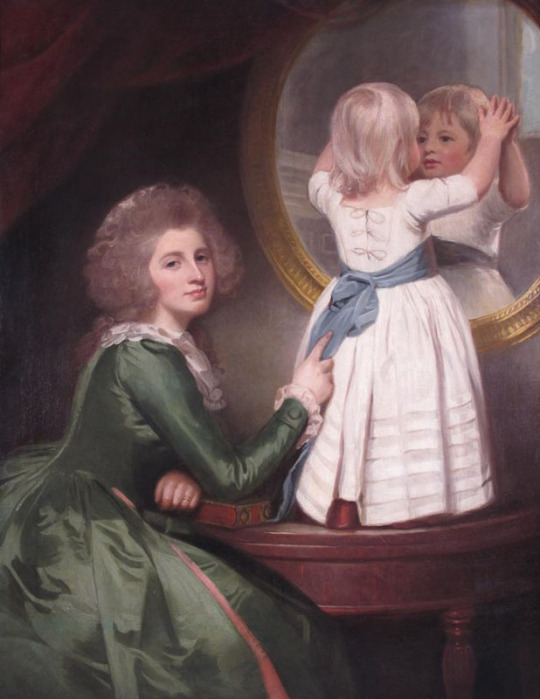
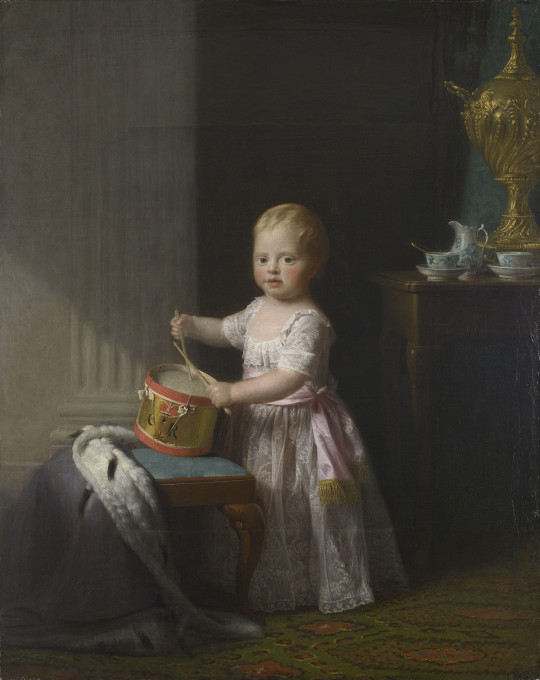
[Left: Anne Barbara Russell née Whitworth with her son Sir Henry Russell, oil on canvas, c. 1786, by George Romney, via Woolley & Wallis.
Right: Prince William, oil on canvas, c. 1767, by Allan Ramsay, via the Royal Collection Trust.]
Pink was just one of the many colours popular in 18th century English womenswear and seems to have stayed popular throughout the century. On the 3rd of January 1712 The Spectator published an article in which a man recalls seeing "a little Cluster of Women sitting together in the prettiest coloured Hoods that I ever saw. One of them was Blew, another Yellow, and another Philomot; the fourth was of a Pink Colour, and the fifth of a pale Green". On the 1st of May 1736 the Read's Weekly Journal, or British Gazetteer reports that the ladies attending the royal wedding wore gowns of "Gold stuffs, or rich Silks with Gold or Silver Flowers, or Pink or White Silks, with either Gold or Silver Netts or Trimmings;" shoes either "Pink, White or Green Silk, with Gold or Silver Lace and braid all over." On the 24th of May 1785 Charles Storer writes to Abigail Adams advising that fashionable colours in English court dress are "pink, lilac, and blue" such "as is worn at Versailles".
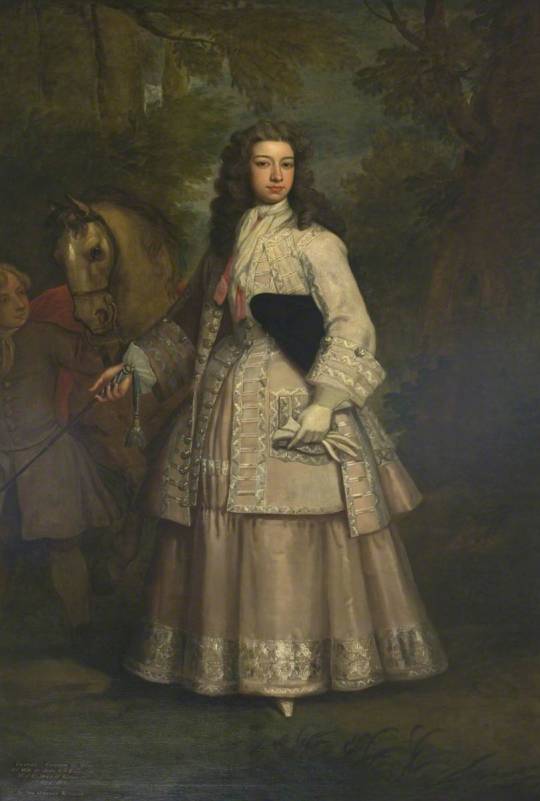
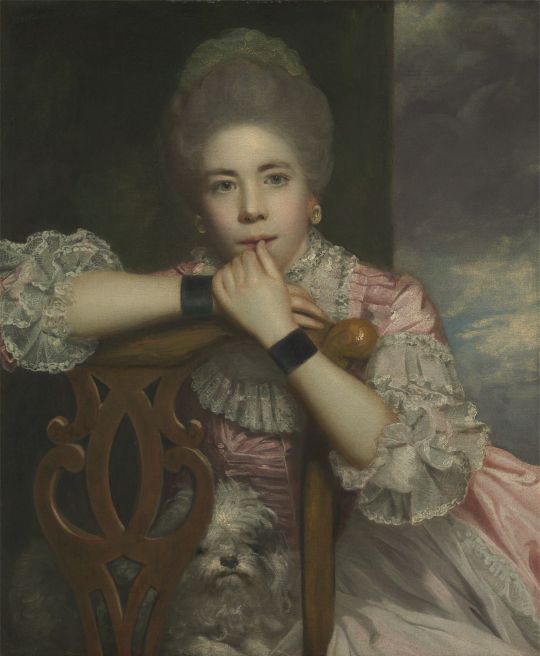
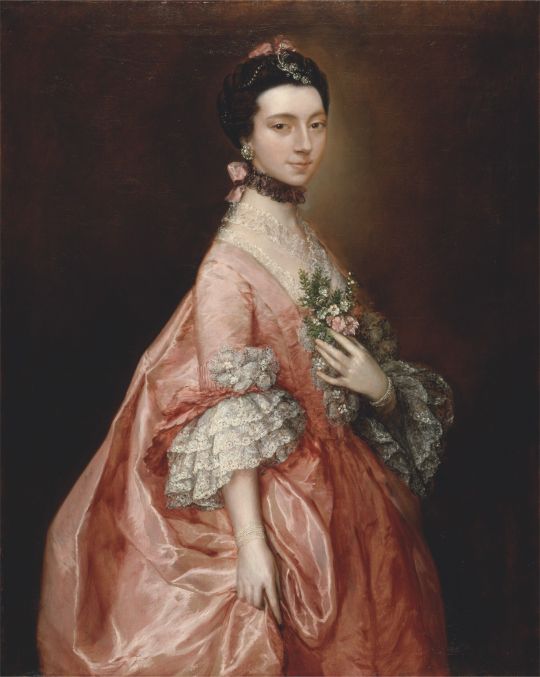
[Left: Frances, Daughter of Evelyn Pierpont, 1st Duke of Kingston, oil on canvas, c. 1700-23, by Godfrey Kneller, via Art UK.
Middle: Mrs. Abington as Miss Prue in "Love for Love" by William Congreve, oil on canvas, c. 1771, by Sir Joshua Reynolds, via Yale Center for British Art.
Right: Mary Little, later Lady Carr, oil on canvas, c. 1765, by Thomas Gainsborough, via Yale Center for British Art.]
In particular pink was popular amongst young women as the colour was associated with youth. Older women who wore pink were mocked as vain for dressing in a way that was seen as improper for their age. On the 31st of January 1754 Lady Jane Coke writes to Mrs. Eyre criticising old women who wear pink:
As for fashions in dress, which you sometimes inquire after, they are too various to describe. One thing is new, which is, there is not such a thing as a decent old woman left, everybody curls their hair, shews their neck, and wears pink, but your humble servant. People who have covered their heads for forty years now leave off their caps and think it becomes them, in short we try to out-do our patterns, the French, in every ridiculous vanity.
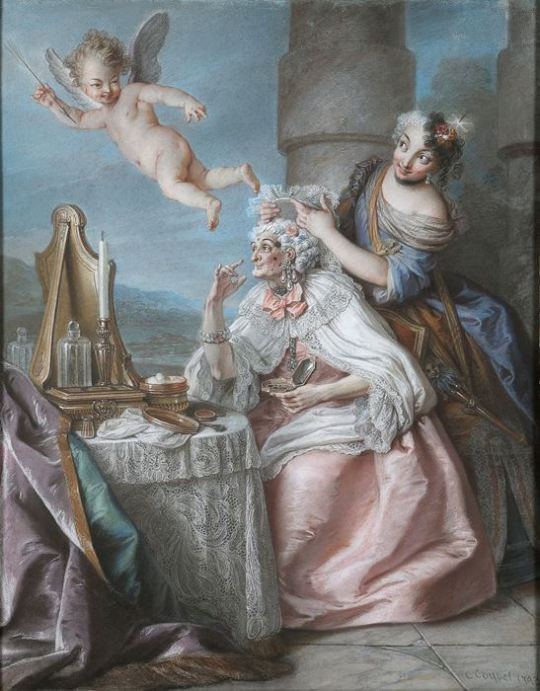
[Folly Embellishing Old Age With the Adornments of Youth, oil on canvas, c. 1743, by Charles-Antoine Coypel, via Master Art.]
For Englishmen acceptable clothing way much more limited. In A Foreign View of England in the Reigns of George I & George II Monsieur César de Saussure writes that Englishmen "do not trouble themselves about dress, but leave that to their womenfolk". He explains:
Englishmen are usually very plainly dressed, they scarcely ever wear gold on their clothes; they wear little coats called "frocks," without facings and without pleats, with a short cape above. Almost all wear small, round wigs, plain hats, and carry canes in their hands, but no swords. Their cloth and linen are of the best and finest. You will see rich merchants and gentlemen thus dressed, and sometimes even noblemen of high rank, especially in the morning, walking through the filthy and muddy streets.
César de Saussure warns that "a well-dressed person in the streets, especially if he is wearing a braided coat, a plume in his hat, or his hair tied in a bow, he will, without doubt, be called "French dog" twenty times perhaps before he reaches his destination" and is not only at risk of "being jeered at" but also "being bespattered with mud, but as likely as not dead dogs and cats will be thrown at him."
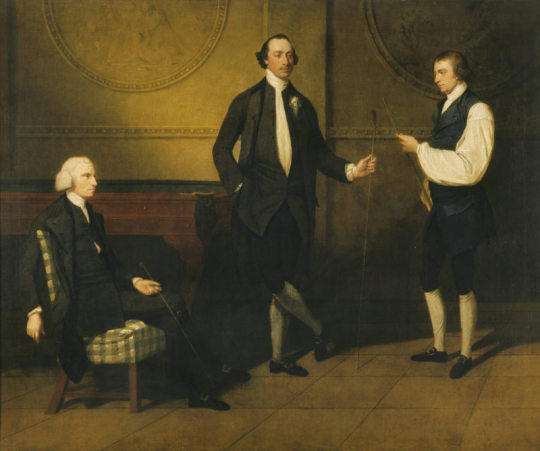
[Reverend Charles Everard Booth, Captain Griffith Booth, and an Unidentified Man playing Billiards, oil on canvas, c. 1775-9, by John Hamilton Mortimer, via the Royal Collection Trust.]
For Englishmen dressing "plainly" mostly meant wearing blacks and browns. In his book on macaroni, Pretty Gentleman, Peter McNeil found that in contrast most English menswear that he describes as generally consisting of "monochrome broadcloth" macaroni wore a variety of colours including green, orange, yellow, violet, red, white, blue, gold, silver and of course pink.
But it's not just the macaroni of the 1770s & 1780s that wore pink. We see pink in descriptions of feminine men's dress (both real and fictional) throughout the 18th century.
On the 2nd of June 1722 Sarah Osborn writes to Robert Byng:
I believe the gentlemen will wear petticoats very soon, for many of their coats were like our mantuas. Lord Essex had a silver tissue coat, and pink color lutestring waistcoat, and several had pink color and pale blue paduasoy coats, which looked prodigiously effeminate.
On the 18th of October 1729 the Universal Spectator and Weekly Journal published a story where an "effeminate" man's clothes were described as follows:
He had a flower'd pink-colour Silk Coat, with a Green-Sattin Waistcoat lac'd with Silver. Velvet Breeches, Clock'd Stockings the Colour of his Coat, Red-heel'd Pumps, a Blue Ribbon at the Collar of his Shirt, and his Sword-Hilt he embrac'd under the Elbow of his Left Arm,

[Sir Miles Stapylton, 4th Bt of Myton, oil on canvas, c. 1730-35, via Art UK.]
In The Adventures of Roderick Random (1748) the effeminate (and queer coded) Captain Whiffle is described as follows:
our new commander came on board in a ten-oared barge, overshadowed with a vast umbrella, and appeared in everything the reverse of Oakum, being a tall, thin young man, dressed in this manner: a white hat, garnished with a red feather, adorned his head, from whence his hair flowed upon his shoulders, in ringlets tied behind with a ribbon. His coat, consisting of pink-coloured silk, lined with white, by the elegance of the cut retired backward, as it were, to discover a white satin waistcoat embroidered with gold, unbuttoned at the upper part to display a brooch set with garnets, that glittered in the breast of his shirt, which was of the finest cambric, edged with right Mechlin: the knees of his crimson velvet breeches scarce descended so low as to meet his silk stockings, which rose without spot or wrinkle on his meagre legs, from shoes of blue Meroquin, studded with diamond buckles that flamed forth rivals to the sun! A steel-hilted sword, inlaid with gold, and decked with a knot of ribbon which fell down in a rich tassel, equipped his side; and an amber-headed cane hung dangling from his wrist. But the most remarkable parts of his furniture were, a mask on his face, and white gloves on his hands, which did not seem to be put on with an intention to be pulled off occasionally, but were fixed with a curious ring on the little finger of each hand.

[Henry Ingram, 7th Viscount Irwin and His Wife Anne, oil on canvas, c. 1745, by Philippe Mercier, via Art UK.]
On the 28th of July 1780 the London Courant reports:
A few days ago, a Macaroni made his appearance in the Assembly-room at Whitehaven, in the Following dress: a mixed silk coat, pink sattin waistcoat and breeches, covered with an elegant silver nett, white silk stockings with pink clocks, pink sattin shoes and large pearl buckles, a mushroom coloured stock, covered with a fine point lace; his hair dressed remarkably high, and stuck full of pearl pins.
On the 6th of August 1792 The Weekly Entertainer published Sketches and Portraits form the Life by Simon Tueopnrastus which included the following description:
Mercator was a youth of some genius and expectation, but by a strange perverseness of disposition, notwithstanding the extreme natural stiffness of his limbs, he had acquired an early attachment to the most finical and effeminate finery; so that, while yet a boy, he would exhaust every expedient of a fertile invention to procure a laced waistcoat, or the most foppish toy; would dangle a watch-string, with brass seals, from each fob, at a time when the frugal care of his parents would not permit him to wear a watch in either; and would strut in a fine pair of second-hand pink silk breeches, and a light blue coat, with all the formal dignity of—a soldier upon the parade.


[Left: Thomas King in "The Clandestine Marriage", oil on canvas, c. 1792, by Samuel De Wilde, via Yale Center for British Art.
Right: Edward Payne, oil on canvas, by Arthur Devis, via Art UK.]
While pink is mentioned in these descriptions of feminine men's dress it's not singled out as the girl colour the way pink would become in the 20th century. I would argue pink is seen as effeminate not because pink is a uniquely feminine colour but because it was used in fashionable dress. In 18th century England being interested in fashion was seen as an frivolous female trait. Men who showed too much interest in fashion were mocked and ridiculed for their gender nonconformity. "A Man must sink below the Dignity of his Nature, before he can suffer his Thoughts to be taken up on so trivial an Affair, as the Chosing, Suiting, and Adjusting the Adornments of his Person," complains a letter published on the 8th of May 1731 in Read's Weekly Journal, or British Gazetteer:
Decency of Garb ought inviolably to be preserved; nor can there be possibly an Excuse for Dressing like a Merry-Andrew: Rich and coloured Silks are in themselves effeminate, and unbecoming a Man; as are, in short, all Things that discover Dress to have been his Study 'Tis in vain for a Fop of Quality, to think his Title will protect him.


[Left: Madame de Pompadour (detail), oil on canvas, c. 1756, by François Boucher, via Alte Pinakothek.
Right: Elizabeth Wrottesley, later Duchess of Grafton, oil on canvas, c. 1764-5, by Thomas Gainsborough, via National Gallery of Victoria.]
English fashion was highly influenced by French fashion. A popular colour scheme in French fashion was green and pink. A famous example of this colour pairing can be seen in François Boucher's portrait of Madame de Pompadour (above left), she is depicted in a green gown with pink bows and flowers. You can see and example of how this style inspired English fashion in Thomas Gainsborough's portrait of Elizabeth Wrottesley (above right), who is depicted in a green gown with a floral pattern adorned with pink, white and green striped bows.
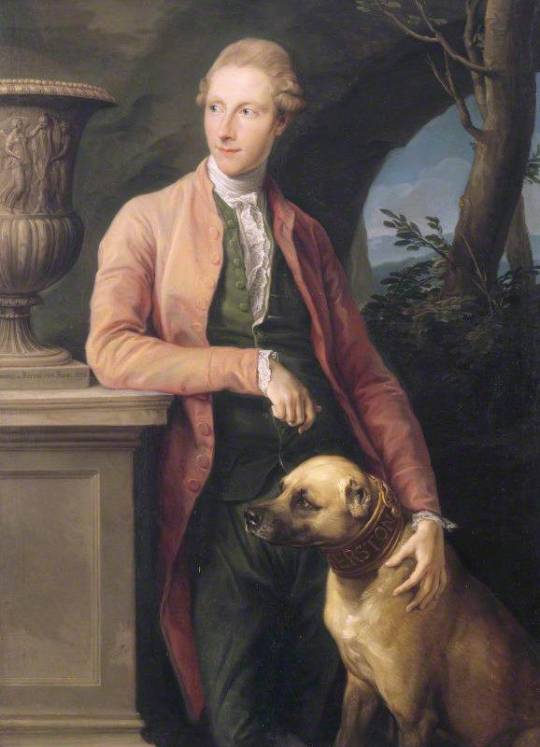
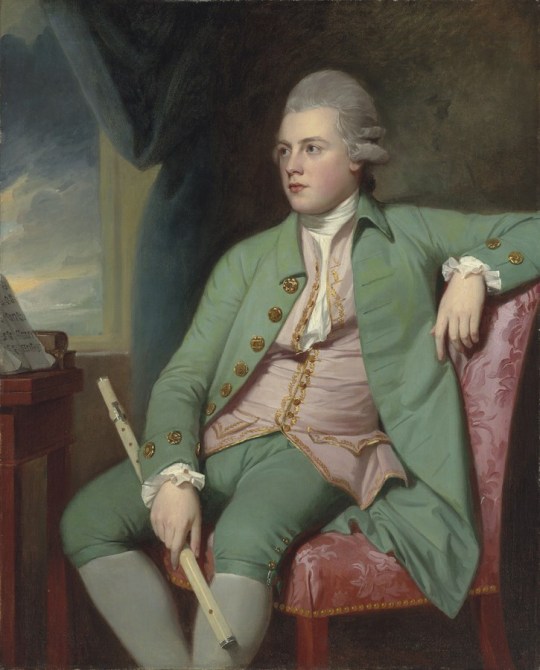
[Left: Sir Harry Fetherstonhaugh, oil on canvas, c. 1776, by Pompeo Batoni, via Wikimedia.
Right: Francis Lind, oil on canvas, c. 1775, by George Romney, via Mackinnon Fine Art.]
Fashionable Englishmen were also inspired by these French designs. Horace Walpole refers to the popularity of the colour combination writing to Lady Ossory on the 19th of February 1774 "If I went to Almack's and decked out my wrinkles in pink and green like Lord Harrington, I might still be in vogue". Almack's is referring to Almack's Assembly Rooms on Pall Mall which is believed to be the inspiration for the Macaroni Club. (see Pretty Gentleman by Petter McNeil p52-55) In a letter to Lord Harcourt on the 27th of July 1773 Walpole writes of "Macaronis lolling out of windows at Almack's like carpets to be dusted."
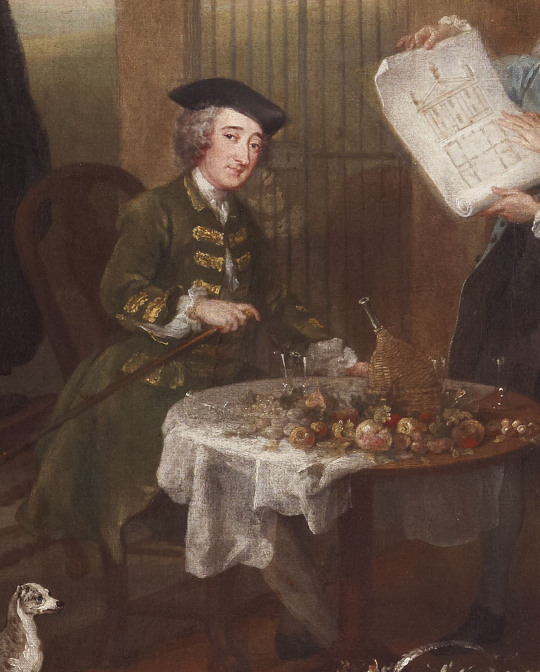

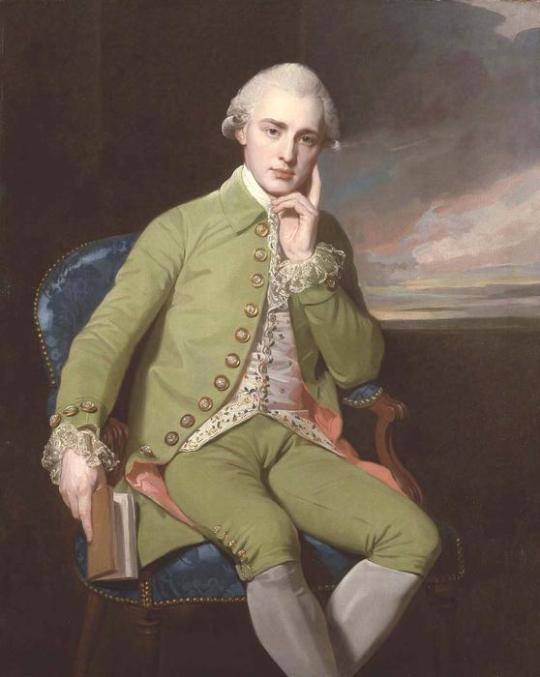
[Left: Detail of Stephen Fox from The Hervey Conversation Piece, oil on canvas, c. 1738-40, by William Hogarth, via Fairfax House.
Middle: Sir William Jones, oil on canvas, c. 1769, by Francis Cotes, via Art UK.
Right: Portrait of a Gentleman, oil on canvas, by George Romney.]
Men who wore green seem to have been just as much, if not more, at risk of being ridiculed, or even assaulted, for the colour of their clothes as those who wore pink. In Pierre Jean Grosley's A Tour to London (originally published 1772) he recalls traveling with a young English surgeon who was harassed by Londoners due to his green French frock coat:
At the first visit which he paid me in London, he informed me, that, a few days after his arrival, happening to take a walk thro' the fields on the Surry side of the Thames, dressed in a little green frock, which he had brought from Paris, he was attacked by three of those gentlemen of the mobility, who, taking him for a Frenchman, not only abused him with the foulest language, but gave him two or three slaps on the face: "Luckily, added he in French, I did not return their ill language; for, if I had, they would certainly have thrown me into the Thames, as they assured me they would, as soon as they perceived I was an Englishman, if I ever happened to come in their way again, in my Paris dress."
230 notes
·
View notes
Text
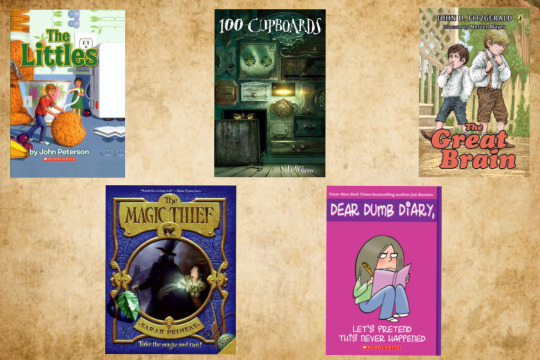

#best childhood book#poll#the littles#the magic thief#100 cupboards#dear dumb diary#the great brain#the hardy boys#moomintrullen#derkholm#the doll people#ivy and bean
62 notes
·
View notes
Text
Tiffany Valentine headcannons for my upcoming fan fic

Full name: Tiffany Beatrice Valentine
Age: 23 (before the events of bride)
Appearance: 5'7, curvy, asian italian mix, dark curly hair, brown eyes,
Personal life: Grew up in a small town in Illinois was poor lived with her mother and younger sister. Father left when she was 12 went to go to the store for a pack of cigarettes and never came back. Lived in a small house and had a collection of porcelain dolls and thrift store nick nacks had a thing for becoming a super model and was into fashion. Ran away from home at 16 and joined a delinquent gang of misfits. Started smoking, dressed edgy and dyed her hair to fit in. Went to jail for 2 years for vandalism and got released. Moved into a trailer park and works a 9 to 5 job at a diner in Lockport Illinois serving as a waitress and is a culprit behind a mysterious case of murders.
Relationships: Charles Lee Ray dated for 6 years til his untimely death and spent ten years searching for him
Family:

(Mother) Eudora Rose Valentine
ʲᵉʷⁱˢʰ/ ⁱᵗᵃˡⁱᵃⁿ/ ᶠʳᵒᵐ ᵘᵖˢᵗᵃᵗᵉ ⁿᵉʷ ʸᵒʳᵏ ᵃᵍᵉ: 50

(Father) Franklin Karter Peterson
ᶜʰⁱⁿᵉˢᵉ/ ⁱᵗᵃˡⁱᵃⁿ/ ᶠʳᵒᵐ ⁿᵉʷ ʲᵉʳˢᵉʸ ᵃᵍᵉ: 53
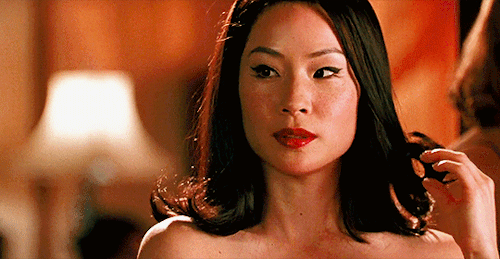
(Sister) Wendy Lia Valentine
ᶜʰⁱⁿᵉˢᵉ/ ⁱᵗᵃˡⁱᵃⁿ/ ʲᵉʷⁱˢʰ/ ᶠʳᵒᵐ ⁱˡˡⁱⁿᵒⁱˢ ᵃᵍᵉ: 19
Pets: Tarantula named Charlotte and a fish named Gary
Hobbies: sewing, knitting, collecting, baking, gardening, driving, sight seeing, shopping, and murder
Music taste: soft rock, 60s and 80s pop, and grunge favorite artists include, Blondie, Madonna, Nancy Sinatra, and Courtney Love.
Favorite foods: Cherry cheesecake, Salmon, and grilled chicken.
Favorite drinks: red wine, iced tea, and cherry pepsi
Home:

Interior:


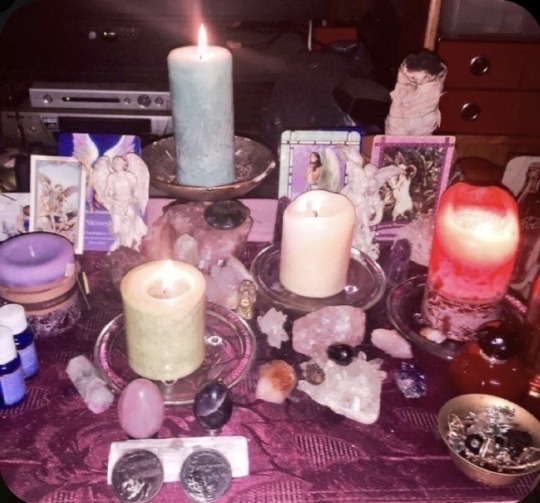
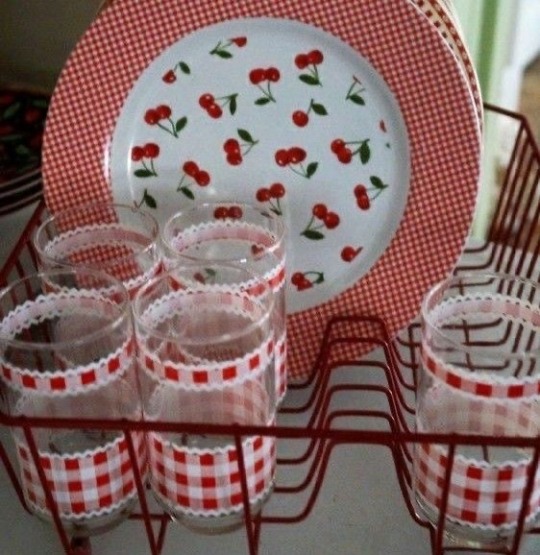
Follow pt2. For more
19 notes
·
View notes
Text
Jackie and the Peterson brothers (WIP)

I did not forget about Ghost Ted don't worry! :')
But along with that I added Franklin to the HK series, one glitchy ghost. Xd
15 notes
·
View notes
Text

Lisa, Franklin and Ted 🥺🥹
#lisa peterson#theodore peterson#hello neighbor#hello neighbor 2#hn animated series#hello neighbor animated series#franklin peterson
23 notes
·
View notes
Text
Franklin. :(

#hello neighbor#hello neighbor welcome to raven brooks#hello neighbor animated series#franklin peterson#:'(#AskKassandraGF V.2
25 notes
·
View notes
Text
youtube
Watch the American Climate Leadership Awards 2024 now: https://youtu.be/bWiW4Rp8vF0?feature=shared
The American Climate Leadership Awards 2024 broadcast recording is now available on ecoAmerica's YouTube channel for viewers to be inspired by active climate leaders. Watch to find out which finalist received the $50,000 grand prize! Hosted by Vanessa Hauc and featuring Bill McKibben and Katharine Hayhoe!
#ACLA24#ACLA24Leaders#youtube#youtube video#climate leaders#climate solutions#climate action#climate and environment#climate#climate change#climate and health#climate blog#climate justice#climate news#weather and climate#environmental news#environment#environmental awareness#environment and health#environmental#environmental issues#environmental justice#environment protection#environmental health#Youtube
6K notes
·
View notes
Text
Jonny’s Summer 2023 Guitar Pedalboard

Jonny about to stomp on a pedal during the Smile's show at Auditorio Nacional in Mexico City in late-June, 2023 (elamplimx).
With Radiohead, Jonny is known for very slowly adding pedals to his setup. While Ed often has half a dozen new pedals for a new album tour, Jonny often adds only one (such as his Headrush in 2000 or his Freeze in 2012). And when Jonny swaps out a pedal for a similar one (like one tremolo for another tremolo), it’s usually only when his old pedals are too worn out for touring (such as his original Whammy WH1 and vintage RE-201 Space Echos). One might think Jonny keeps the old pedals around because, since Kid A, he’s often playing other instruments. However, at live shows Jonny is still happy to replicate some recorded sounds on guitar, whether it be the filtered samples on Feral (using volume pedal, Whammy, and phaser) or the col lengo strings on Burn The Witch (using Whammy, overdrive, and a cello bow). It’s clear he enjoys getting the most out of those pedals in that specific arrangement.
But with The Smile, Jonny has been swapping in new pedals pretty regularly. In 2022, Jonny was experimenting constantly, sometimes adding new pedals for only a couple of days before swapping in a replacement. He quickly eschewed some of the Radiohead-favorites heard during the earliest Smile streams, such as his Small Stone, Tremulator, and OD3. In their place came flangers, compressors, and expression pedals: types of pedals he’d never used with Radiohead.
However, it seems like Jonny found a setup he was fairly happy with by the end of the fall 2022 tour. His latest live board is quite similar to the one used during March 2023 recording sessions for the band's upcoming second album, but even so there are a couple surprises!

A photo of Jonny's guitar board at Philadelphia's Franklin Music Hall on July 8, 2023 (photo by Gio H.). He used this setup for the band's North American tour spanning 14 shows in June and July.
Guitar ->
Peterson StroboStomp HD tuner
MXR Dyna Comp compressor
EHX Freeze Sound Retainer
EHX Pitchfork pitch shifter
Boss SD-1 Super Overdrive
EQD Hizumitas fuzz
Telenordia/Tortenmann TA-24 Treble Booster
Boss DD-200 delay
Akai Headrush E2 delay/looper
Boss RE-202 Space Echo delay/reverb
EQD Pyramids flanger
Toadworks True Bypass (laptop send/return loop)
Lehle P-Split III signal splitter (A/B) <
(A) Radial JDI Stereo direct box <
Radial Ch1 LOW-Z output -> FOH Mixer
Radial Ch1 THRU output -> Fender ’65 Reissue Super Reverb
(B) Strymon Iridium -> Radial JDI Stereo direct box (Ch2 LOW-Z output) -> FOH Mixer
The small lamp over the board is a Mighty Bright HammerHead music stand light.
Jonny previously used a Peterson StroboStomp HD with his Sequential Circuits Prophet 5 on the Smile's 2022 tour. But this is the first time he’s been seen with one on his guitar board. It replaces the Boss TU2 he’s used since the earliest Smile shows.
The Telenordia Treble Booster is borrowed from Thom. The Telenordia is still marked with Thom’s guitar settings, from when he used it on You Will Never Work In Television Again during December 2021 rehearsals.

Thom stomping on Jonny's current Telenordia Treble Booster during a rehearsal on December 2, 2021 (youtube).
On Radiohead tours since OK Computer, Jonny has always brought a Vox AC30 — an amplifier well-known for its low and mid gain sounds. With an AC30, Jonny can get different flavors of overdrive by balancing between clipping from the pedal (using the pedal’s gain control) and clipping from the amp (using the pedal’s volume/boost control). And of course, he’d use his separate Shredmaster+Eighty-Five chain for heavy distortion on older songs.
But on tour with the Smile, Jonny has been using a Fender ’65 Reissue Super Reverb, an amp with much more headroom than the Vox thanks to a combination of higher wattage and negative feedback. As a result, we hear the overdrive pedal’s sound more clearly — the Boss SD1’s mid-rangy sound is especially noticeable on live versions of Thin Thing. So it makes sense that even Jonny would want to experiment with multiple dirt pedals for different flavors.
Jonny was first seen using an MXR Dyna Comp in a rehearsal photo, most likely taken when preparing for the fall 2022 tour (despite being posted in 2023). Thom and Ed have both previously used the pedal as well. Thom toured with a Dyna Comp only briefly before switching to his current Telenordia Kompressor. So it's interesting that Jonny first toured with a Kompressor (last year), but has gone the other way and switched to a Dyna Comp.
For those curious about the rhythmic delay setting marked on Jonny’s Akai Headrush E2, check out behind-the-scenes photos from The Smile’s Tiny Desk show. However, so far we’ve still only heard the pedal used as a looper.
Placing his Boss RE-202 after his Headrush allows Jonny to add ambient effects to his loops, as he does during the live outro of Skirting On The Surface.
Jonny first used a Strymon Iridium at a performance of Steve Reich's Electric Counterpoint at the Hidden Notes festival on September 25, 2022. For that show, it replaced his amp. But with the Smile, he’s using it as a backup for his Super Reverb.

A photo of Jonny's pedalboard from a November 2022 show in Anthem, DC (Facebook).
UPDATE: we originally listed the Telenordia TA-24 Treble Booster as a Telenordia TA-100 Overdrive. Thank you to Kayky for noticing!
#The Smile#Jonny Greenwood#Radiohead#Burn The Witch#Feral#You Will Never Work In Television Again#OK Computer#Skirting On The Surface#A Light For Attracting Attention#Thom Yorke#Ed O'Brien
44 notes
·
View notes
Text
Yeah, theodore's a crazy villain, but just like any villain, he had some messed up lore 💀
Song: Eyedress by Jealous <3
#hello neighbor#hello neighbor welcome to raven brooks#theodore peterson#aaron peterson#franklin Peterson#my edit#edit
12 notes
·
View notes
Video
youtube
Principal Abanante has a secret lover!
#youtube#welcome to raven brooks#abanante#raven brooks#youtube poop#dr robotnik#mr peterson#Franklin Peterson#ytp#delroy#nicky roth#funny memes#edit#aosth robotnik#trinity bales#enzo esposito#lucinda#secret neighbor#ivan torre#maritza esposito#hello neighbor#theodore peterson#franklin peterson#raven brooks ytp#joy bales#Donald Bales
3 notes
·
View notes
Text

This Woman’s Work: Why Black Women Can Never Catch a Break
by Diana Carmela
Black women are the blueprint for everything, yet we are the butt of every joke. There have been so many cases of our features getting praised…but not on us. Our trauma is a source of entertainment, our downfall is the source of another’s upbringing, and our femininity is the source of white pseudodisenfranchisement. Unfortunately, it may never end. Why? Because we are black women.
It’s no secret that slavery laid the foundation for the way that black women are looked at in the world. We were brought to a country where our beauty and innovation were replaced with ridicule and shame. We saw how the white people lived way better. Different, but better. This difference is how the narrative shifted. We saw how white women, despite their gender, still got treated better by white men than anyone else in the room. She was never property. She was never given excruciatingly painful outside labor. She was never raped openly. She was never to be addressed as anything but as a woman. The same cannot be said for us.
Many know Ida B. Wells for her work in civil rights, but she was also known for suing a railroad company for forcing her out of a train car. In a similar case to Claudette Colvin, Aurelia Browder, and most famously, Rosa Parks, Ida had refused to give up her seat on the basis of her being in the correct car—the Ladies car. The conductor however, thought otherwise, and because of this, forced her out rather furiously. In the book, “From Slavery to Freedom”, this basis is described as the following, “Such segregation laws permitted a train conductor to deem Ida B. Wells neither white nor a lady” (Franklin, 2021. p. 300.). What the book does not mention, however, is that she was demanded to be castrated due to the basis mentioned. This proves a point that many black women have been trying to prove for years—black women cannot exist as women without our femininity being questioned or outright denied.
A more recent example would be with Megan Pete, better known as rapper Megan Thee Stallion. At the rise of her career, her music began to be overshadowed by her coming out and saying on Instagram that she had been shot in the foot by R&B singer turned rapper, Tory Lanez, with the blatant statement, “Tory, you shot me” (Pete, 2020). Many began to speculate on why Tory, born Daystar Peterson, would shoot Megan, and many resulted to transphobia, stating that reason why was because he had found out that she was a man. While this is in fact false, with court documents from the state of California in reference to Tory’s arrest for illegal gun possession earlier in 2023 to prove it, Megan still continues to face masculinisation from the world. This was unfortunately not the first time she has faced this, as she faced it at the start of her career for her height, standing at 5’10”. Due to the roles that were given to us during slavery, we have never been able to apply the traditional gender roles of masculinity and femininity in the same way that other ethnic groups are.
This constant need to prove our femininity is something that is a uniquely black feminine experience. It’s baffling how this not only affects our relationships with other ethnic groups, but also with our own community. The connection that we are to have based on a sense of common experience, is destroyed by two things—the forcing of Eurocentric ideals onto our people, and the allowed impressionablily of black men. Now I don’t say the latter in a way to call black men dumb, because intelligence is somewhat subjective if you ask me, but with the infantilisation of black men, it seems as though the “boys will be boys” excuse has now become a mindset that has been extended to a degree to black men, something that black women have never had. I’ll use myself as an example. During my freshman year of high school, a black male student thought it was acceptable to slap my butt when walking past me whilst in the view of a teacher. When I reported the incident as sexual harassment, I was told that it was most likely an accident and that I should focus on my studies because again, “boys will be boys”. You may be saying, “Now Diana, white women don’t have an excuse like that either”. They do…in the form of their femininity.
“White women tears”. We’ve all heard of them, and I’m sure plenty of us have seen them. The thing is, these don’t always come in the form of a clear, salty liquid from the eyes, but rather a need to prove something to men. Remember when I said the word “pseudodisenfranchisement” in the introduction? Allow me to define it for you. Pseudodisenfranchisement, per my own words, though not my own creation, is a belief system in which the majority believes that they are the minority, and in response, they enforce the dominance that they never lost in the first place. This is something that has influenced white women in more ways than people think. I’m sure we’ve all heard of Susan B. Anthony, a woman who was known for being one of the most prominent suffragettes in history. Yet it was an organization founded around her cause that didn’t allow black women to apply after the 19th amendment was ratified, as revealed on page 421 of the book, “From Slavery to Freedom”. We’ve heard of Sara Baartman, an African woman who was taken to France and placed in a human zoo and then a freak show for having a large butt. The response from white people, you may ask? In men, sexualisation and further reason to fetishise us. In women, the bustle, an invention in French fashion created with a belt and cylindrical wiring, to emulate a large backside. Her large backside. From what I’ve noticed nowadays, there has never been a time where a white man has ever invented something as a way of copying a black man because white men weren’t getting any attention from white women. Why? Because they never have to. At the end of the day, white men are still in control, therefore they don’t have to compete. This seemingly made up competition based on our femininity is another uniquely black feminine experience.
I’ve mentioned fetishisation rather implicitly in this essay. What is a fetish exactly? In the normal sense, it is a sexual desire for, or attraction to something that is not typically seen as salacious. This can range from balloons to feet. While fetishisation is not a unique experience for black women, the levels of it for us is very much so. We face it from every ethnic group, but most prominently from white men. According to page 448 of the book, “From Slavery to Freedom”, many books published by black women during the Harlem Renaissance discussed this phenomenon. One book saying, “Her white lover sees her only through the lens of primitivism” (Franklin, 2021). This was said in reference to a black female character who was with a white man romantically, but the man was with her for the sake of a lustful urge. Another instance of fetishisation that is specific to black women is being fetishised by our own men. Whether people want to admit it or not, there are countless black men who fetishise black women, some of which I have come across in my own life. Calling us things like “chocolate”, a “black queen”, or “pretty for a black girl”, along with constantly mentioning our bodies when you see us, like saying we have DSLs or any other way people can twist it, is not only deeply dehumanising, but also just plain creepy. One instance that I can name is when a guy that I used to be friends with told me that I was “butterscotch” and therefore I was better than any black girl he knew in school. Need I mention that this was a black man with two black parents and three black sisters? Yeah, gross. I know.
As an Afro-Latina who has been fetishised for most of her life, knowing the basic definition of a fetish and fetishisation, it leaves me to ponder some things. Things that black men from what I’ve observed, never have to think about. Why do you never hear of Asian women bringing down Latinas whenever they have a Latino partner? Why are we the token group that gets the dirt from which the stick came from, let alone the shortest end? The main question I’ve asked however, is this one. If we look at the definition provided of what a fetish is, how on Earth can black women be a fetish if we were never given the chance to prove that we are not automatically sexual?
Another thing I ponder about is the belief that many black men have created on how we, black women, cannot submit to black men. Many will argue that this is a new belief that has come with the Digital Age and the rise of social media, but it unfortunately is not new. The earliest trace of this mindset that I have found is on page 423 of the book “From Slavery to Freedom”, with famous Civil Rights activist Marcus Garvey musing nostalgically aloud, “Let us go back to the days of true manhood when women truly reverenced us. We would have many more mothers, many more virtuous wives, many more amiable and lovable daughters.” (Garvey, The Negro World). Am I well aware of the fact that this kind of gender discrimination is prominent in all ethnic groups? Yes, yes I am. I’m a double minority in this country myself. However, the difference is, that in the case of black women, we are being told this often by men who have never been systematically able to lay down the financial, emotional, or physical foundation for us to submit, as evidenced by the slavery to mass incarceration pipeline of black men, leaving black women to pick up the slack and be both the man and the women. I would also like to add that the idea of submission is very twisted in the world, but especially within the black community, as many men within it believe that we are simply supposed to submit to them because they are a man, when that should never be the case at all. This also leads to a relationship gap within our own community that only black women face. When men of other ethnic groups were to go off into war, the women of their ethnic communities were allowed to be docile and take care of the home in a way that was unapologetically feminine in nature, something that black women have, for the most part, never experienced.
This unfortunately doesn’t only affect our bodies, but also the beliefs and possibilities of how we are to act in our homes. Mary Church Terrell, the founder of the National Association for Colored Women has been described on page 361 of the book, “From Slavery to Freedom” to believe that black women should work on their presence in the domestic sphere, meaning the home and family. While this base ideal isn’t entirely problematic, the othering of you and those who agree with you as “best women”, definitely is. The ability for black women to be housewives and homemakers was not only heavily criticised by men, but also black women. Unfortunately, this is so normalised within our own community to the point where most black men even get angry whenever you correct their actions. This also affects another aspect of dating and marriage that is a uniquely black feminine experience.
Isn’t it also weird as to how we are the ones targeted the most for dating outside of our race and/or ethnicity? We are the ones who get people’s sons kicked out for the choice of who they love. We are the ones that get told that we are “worsening our race” by our own men and women. My own friend Asharia, who is currently dating a white man, was told by their father to, “think about their ancestors” when they told their parents about him. Funnily enough, a lot of this comes from a place of discrimination that is simply used as a way to limit the choice of the black woman in her own life. No one bats an eye at a black man with a non-black woman. If anything, it’s relatively praised in comparison. This is especially prevalent with black women who date white men, which brings me to a concept that I like to call the Afro-Europa pipeline, which refers to the phenomena of black women, specifically black American women traveling to European countries in order to avoid or lessen racial discrimination and sexism. The best example of someone who has benefited the most from this pipeline is Josephine Baker, who is mentioned on pages 450 and 451 of the book, “From Slavery to Freedom”, as she became an expatriate in the early 20th century, earning praise for her performances in clubs and even in social justice, working for the French Resistance during World War ll.
In conclusion, the role that gender plays on the black experience is more complex than most realize. Our gender and our race can never be separated from one another, and because of this, the grace we receive in the world by others is minimal to none for doing things that others would simply get a slap on the wrist for. The things that we face are not on a simple basis of blackhood or womanhood, but rather an intersection of both, especially when it affects how we navigate through life and communicate with every human on Earth.
2 notes
·
View notes